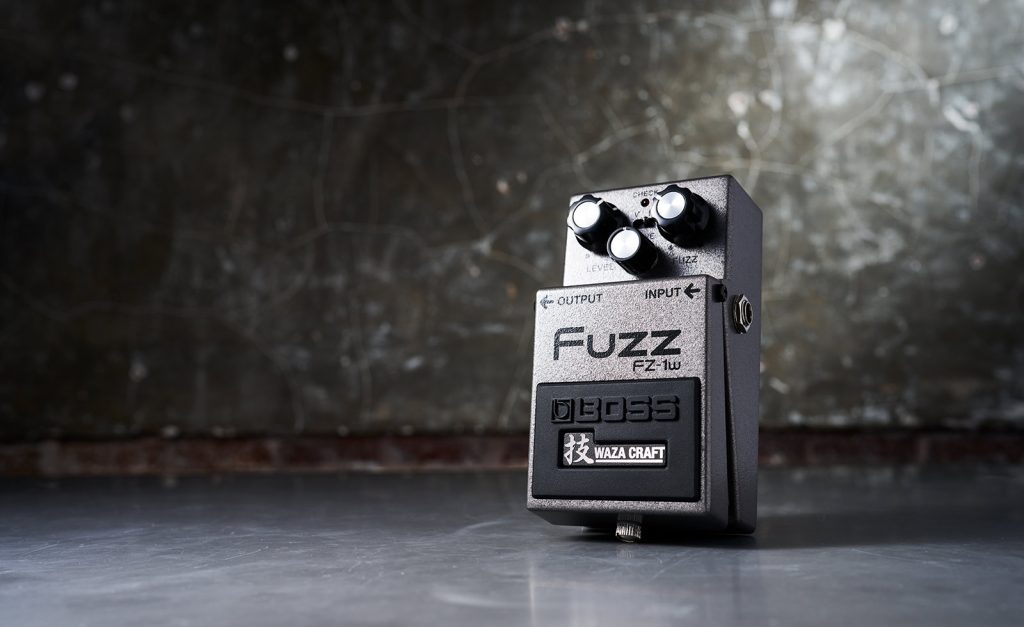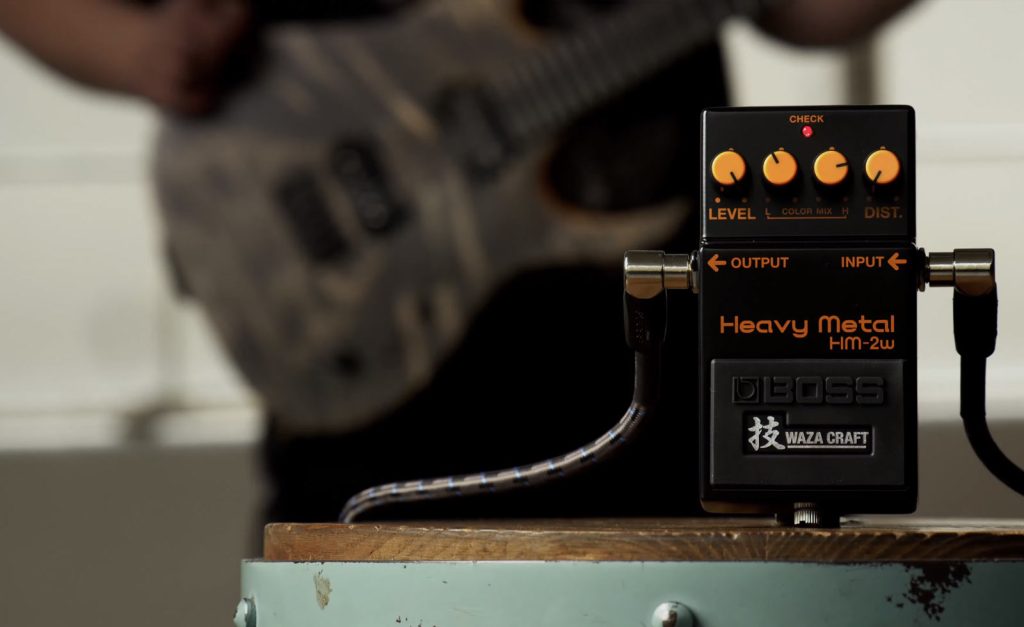The EQ pedal is a tool for precision tone shaping that boasts various uses. Adding EQ increases the specificity and control a guitarist has over their sound. There are countless ways to utilize an EQ pedal. Some are obvious, others almost counterintuitive, but all yield fantastic results. As simple as an EQ pedal may initially appear, it’s a must-have for any pedalboard, large or small.
Placement is Key
Unlike many other effects, EQ works well in several different positions on a pedalboard. Depending on its placement, EQ can achieve widely different results. It can be expansive, helping to shape and articulate or push and drive other effects into new realms.
PEDAL COMBINATIONS
Overdrive
An overdrive pedal can be the absolute cornerstone of a good pedalboard. Every guitarist has their favorite overdrive type, but many players need more than one driven tone. There is always that explosive section of the song that requires more oomph. An EQ pedal can be a great way to make even more out of a beloved overdrive without affecting the core tonal characteristics of the standard drive tone.
"A boost in mids will help the effect maintain clarity in the mid-range, adding a tasteful bump to the guitar in a mix."

To do this, position the EQ pedal in front of an overdrive. Then add a slight boost to the mid frequencies (around 400 Hz–1.6 kHz) and a moderate boost to the EQ pedal’s master-level output. This setting will push the gain stage of the overdrive pedal, adding a thicker degree of drive to the overall tone. The boost in mids will help the effect maintain clarity in the mid-range, adding a tasteful bump to the guitar in a mix.
Recommended Pairings
- BOSS GE-7 and DS-1
- BOSS GE-7 and BD-2W
Fuzz
Fuzz pedals can be a lot of fun. The massive amount of gain and cascading harmonics they create have been popular amongst guitarists since the early ’60s. When played solo, most fuzz pedals sound great in any setting. However, fuzz can quickly disappear in a mix alongside a drummer and bass player.
This is because many classic, coveted fuzz tones of rock and roll history have an extremely scooped midrange. Coupled with the massive amount of natural compression created by the gain, fuzz can be challenging to balance against a noisy band.

"Carefully add back in some of the lost frequencies without overly changing the essential tonal makeup of the fuzz itself."
Have no fear. An EQ pedal can be a great way to get the most out of a favored fuzz. Carefully add back in some of the lost frequencies without overly changing the essential tonal makeup of the fuzz itself. Position the EQ pedal after the fuzz pedal in the signal chain. Then, try boosting around 800 Hz–1.5 kHz. This push in the upper mids will lift the effect above the bass and drums’ frequencies, maintaining the fuzz’s tonal characteristics. This setting will also help cut through above the other instruments.
Recommended Pairing
- BOSS GE-7 and FZ-1W
Distortion
Distortion is an essential effect for a heavy, modern guitar tone. While gain is the backbone of this effect type, an aggressively shaped EQ defines it. Being able to accurately and specifically tailor a distortion pedal to sit correctly in the mix is extremely important. Although almost all distortion pedals offer a degree of tone shaping, many come equipped with only a single, general tone control. Positioning an EQ pedal after a distortion increases the tonal possibilities of that distortion pedal.
Here’s one popular method for creating an extreme distorted tone. Use an EQ pedal to scoop out the mid-range and boost the bass frequencies and upper mids. Do this to taste, as increasing the volume of particular frequencies will also cause a lift in the noise floor. This could create unwanted hiss.
"While gain is the backbone of distortion, an aggressively shaped EQ defines it."
It is, however, possible to use an EQ subtractively. Try lowering the mid frequencies, around 400 Hz–1.6 kHz. Then gently introduce a bump around 3.2 kHz and between 100 Hz–200 Hz in the bass frequencies. The result is a thick, modern, weighty distortion tone with a fat low end and piercing high end.

Recommended Pairings
- BOSS GE-7 and HM-2W
- BOSS GE-7 and MT-2W
Reverb
The reverb pedal is an infinitely valuable tool for any guitarist. However, some amplifiers lack an effects loop, so the reverb pedal must run into the amplifier’s front. This isn’t a problem if the amp is clean or the player likes the sound of a muddy reverb. Still, often it can leave reverb tails dull and less defined than with an effects loop.
An EQ pedal can be handy in this situation. By positioning the EQ pedal after the reverb, the EQ can act as an extra layer of tone shaping for your reverb tails. A light boost in treble frequencies and a slight cut in the bass frequencies can help to clear up the delay tails. Think of it as the EQ pedal counteracting the muddiness of the amplifier’s preamp. The amp will still impact the tone of the reverb. However, adding an extra layer of tonal clarity will help keep the reverb tone clear and articulate.
Recommended Pairings
- BOSS GE-7 and RV-6
- BOSS GE-7 and RV-500

"By positioning the EQ after the reverb, the pedal can act as an extra layer of tone shaping for your reverb tails."
Expansion or Salve
EQ pedals pair well with most effect types. However, they’re often more an expansion or a salve to help the other effect perform at its best. There is virtually no end to the uses for an EQ pedal. In the recording studio or on stage, in an effects loop, or into the front of your amp, EQ can help make the most out of any setup.






